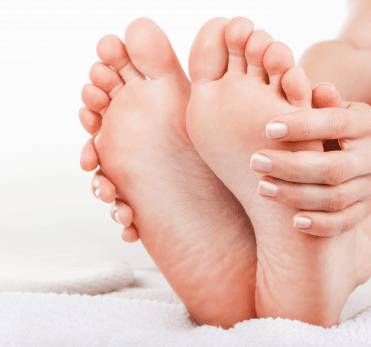Warts and condylomas. Diagnostics and treatment
Warts are tumours of skin and mucosa of white or light-grey colour with uneven horned surface that have the shape of nodules of nipples and form due to excess epidermis and papillary layer of derma.
All types of warts are caused by the human papillomavirus (HPV)
There are around 150 types of this virus. Certain types of HPV damage anatomic areas specific for them (common warts are caused by types 2 and 4, warts of the sole of the feet – by type 1 etc); however, they also can appear in the locations not inherent for them.
How does HPV spread?
- By direct contact (common warts – through hands; genital warts, also called condyloma – during sexual intercourse).
- By indirect contact (through infected articles).
Warts propagate through the skin and mucosa; most often, as a result of penetration by the virus into the organism through damaged skin during direct contact, especially if it is too dry, in case of skin disruptions, blood circulation disorder, or excessive sweatiness. The virus that causes warts does not penetrate deeper than the skin.
How do warts look like and of what types can they be?
Warts can be of several types:
- Common warts are widest-spread. Often they occur with children and teenagers and are often localised at the skin of palms and feet. They start as a hard light-grey nodule with rough surface which leaves small black specks after being cleaned away. Such warts may be painful.
- Flat (youngsters’) warts appear on hands and face. They can be small, in large numbers, and have red or brown colour, sometimes with yellowish tint. They grow at the back surface of the neck and hands as well as on the skin of the knees. Such warts may propagate after shaving on the face (men) and legs (women).
- Foot warts appear among all age groups. As a result of constant pressure, they are extremely hard, flat, and have horned surface, often with visible black specks. Normally, there are 2-3 warts; sometimes, there may be more than a dozen. Several adjacent warts may merge and form a kind of surrounded plate. Such warts are often painful and impede walking.
- Thread-like warts most commonly grow on the neck, in the underarms, on the skin of the eyelids, and under the breast. They can be thin, several millimetres long, with distinct edges, in the form of nipples of uneven surface. The number of warts can vary greatly from single ones to huge congregations.
- Genital warts (Condyloma acuminatum) have a pin-head size, red colour, often with spurs on their legs. They appear on the external genital organs, on mucosa, around the anus, in the perineal region, and on the skin of the buttocks. Warts may merge and resemble cauliflower or cockscomb. Infection is spread during sexual intercourse or through infected articles. Some types of HPV persisting in the genital organs area are carcinogenic, i.e. may trigger the development of cervical cancer.
What causes occurrence of warts?
Weakening of the immune system of the organism
- Disorder of the barrier function of the skin (too frequent wetting of hands or feet; micro-injuries)
- Insufficient hygiene
- Unsafe and promiscuous sex life (in case of genital condyloma)
- As an after-effect or side-effect of certain diseases
- After kidney, heart, or liver surgery
Why should warts be treated?
If no treatment is applied, warts may merge, become painful, and bleed if damaged or scratching.
Applicable treatment
Local action medications:
- preparations of strong acids
- cytotoxic preparations
- DNA inhibitors
Destructive treatment methods:
- Electrocoagulation
- Laser therapy
- Cryotherapy
- Surgical removal
Immunotherapy
In case of multiple warts, several treatment methods may be applied. However, a certain type of treatment can be prescribed only by a doctor with due consideration of the age and immune system of the patient as well as the amount, coverage, size and location of the occurrence of warts.
Prevention of warts
- Prevent the skin against excessive drying
- Do not overwork; follow the balanced work and rest procedure
- Balance your food
- Take care of your feet in order to avoid excessive sweatiness; do not wear narrow, uncomfortable shoes and synthetic fabric socks
- Safe sex life is necessary to prevent condylomas
To read about laser treatment of warts, follow this link.
The article is an intellectual property of Era Esthetic laser dermatology clinic. Textual and other information contained herein may not be copied and/or distributed or used in any way.










